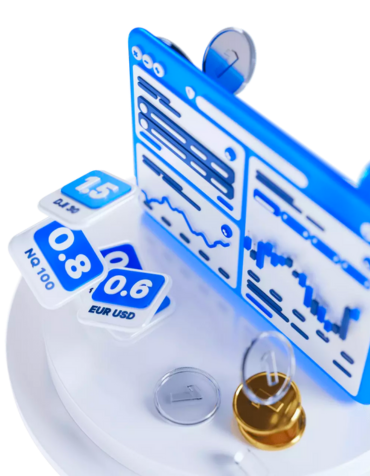We round up the best brokers that we believe offer best value for forex traders.





Trading the EURMXN forex pair involves buying or selling it in the foreign exchange (forex) market. Here are the basic steps to trade EURMXN:
To trade any forex pair, including EURMXN, you'll need to open an account with a reputable forex broker. Ensure that the broker offers access to this specific EURMXN pair.
Deposit funds into your forex trading account. The amount you deposit will determine the size of your trading positions.
Before making any trades, perform a thorough analysis of the EURMXN pair. This analysis typically involves fundamental analysis (economic data, interest rates, geopolitical events) and technical analysis (price charts, indicators) to determine your trading strategy.
Most brokers offer trading platforms that allow you to execute trades. Familiarize yourself with the platform's interface and tools.
Choose whether you want to buy (long) or sell (short) the EURMXN pair based on your analysis. Enter the trade order on your trading platform, specifying the amount (lot size) you wish to trade.
Executes the trade immediately at the current market price.
Sets a specific price at which you want your trade to be executed.
Sets a price at which your trade will be triggered if the market moves in a certain direction.
To manage risk, consider setting stop-loss orders to limit potential losses and take-profit orders to lock in profits at a certain price level.
Once your trade is executed, monitor the EURMXN pair's price movement. Keep an eye on news and events that may impact the exchange rate.
When you achieve your trading objectives, either manually close the trade or wait for your predetermined take-profit or stop-loss levels to be reached.
After closing your trade, assess the outcome. Review your trading strategy and learn from both successful and unsuccessful trades to improve your skills.
Always practice proper risk management. Never risk more than you can afford to lose, and consider using leverage cautiously if available.
For the trend following strategy, start by looking at the long-term charts to identify the primary trend. You can use technical indicators like moving averages or trend lines to confirm the direction of the trend. Once you have a clear uptrend or downtrend, you can enter a long position when the price breaks above a resistance level in an uptrend, or enter a short position when the price breaks below a support level in a downtrend. To manage risk, set stop-loss orders to limit potential losses and take-profit orders to secure profits at key levels. Keep an eye on your trade and adjust your stop-loss and take-profit levels as needed.
Now let's talk about range trading strategy. This strategy works well during periods of consolidation or range-bound movement on shorter timeframes. Look for areas where price has repeatedly reversed within the range to establish support and resistance levels. When price approaches these levels, you can enter long positions near support levels and short positions near resistance levels. To protect against false breakouts, place stop-loss orders outside of the established range. Take profits near opposite boundaries of the range or at predetermined reward-to-risk ratios.
Moving on to news-based strategy (remember that this requires staying updated with economic news releases related to EURMXN). First, we have breakout strategy: before major news releases like central bank announcements, identify key support/resistance levels where price has reacted strongly before. If positive news is expected for EURMXN, consider entering long positions if price breaks above resistance; conversely, if negative news is expected for EURMXN, consider entering short positions if price breaks below support. Place stop-loss orders to limit potential losses if the breakout fails and take-profit orders at predetermined levels or near significant support/resistance.
Lastly, we have news fade strategy: monitor economic news releases and wait for a sharp initial reaction in EURMXN following unexpected news. If this initial move is exaggerated or contradicts the underlying trend, consider fading (trading against) the move. Enter positions opposite to the initial price spike and use tight stop-loss orders to manage risk.